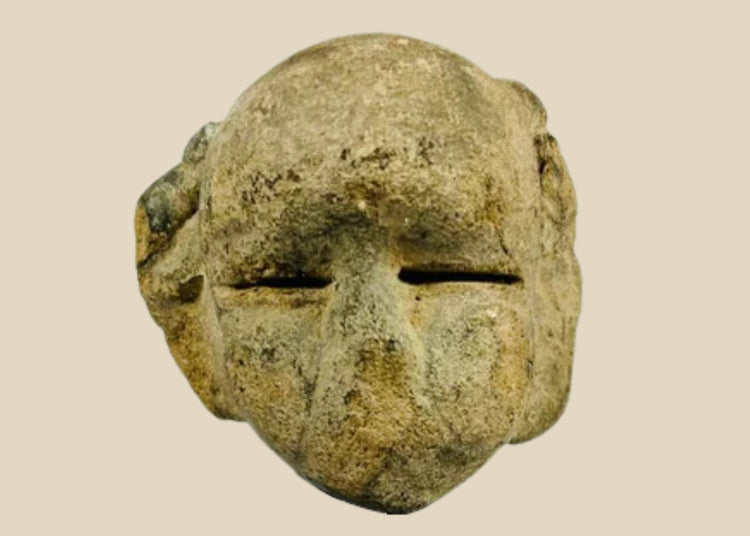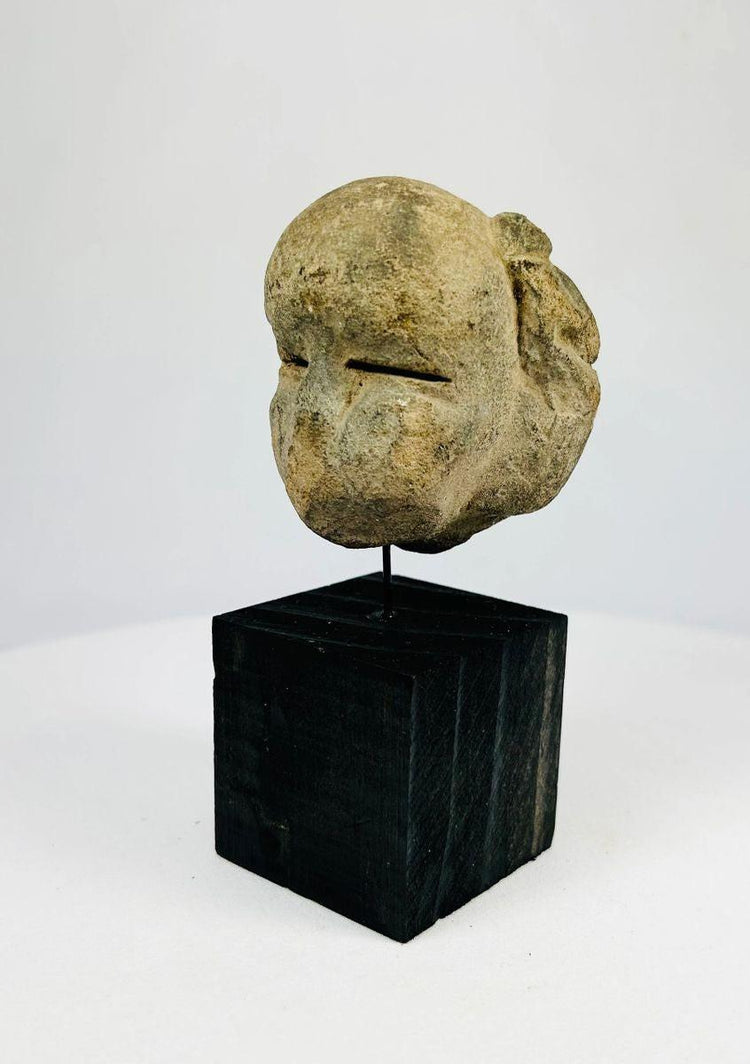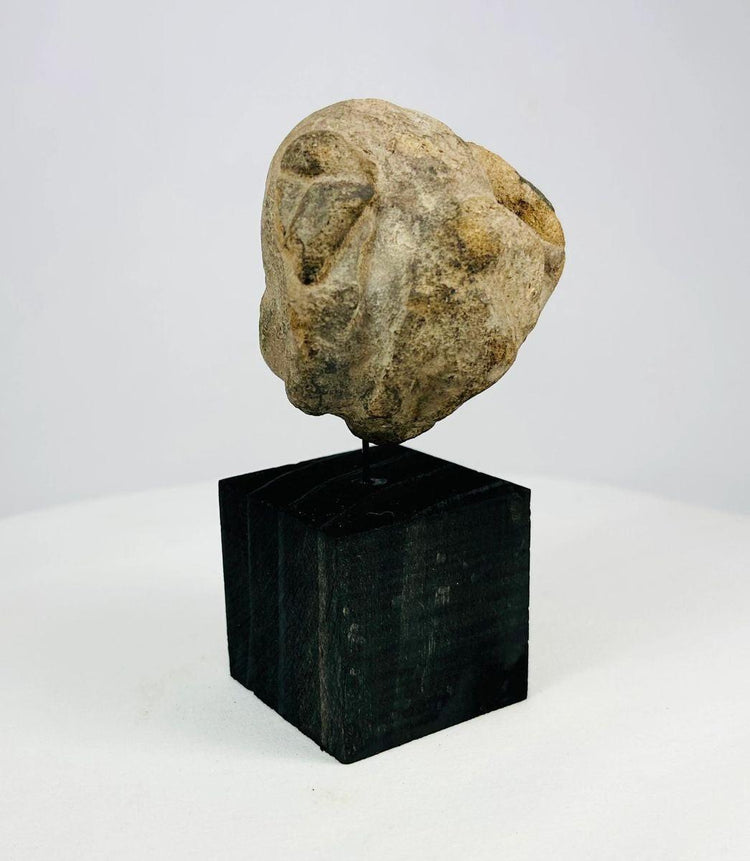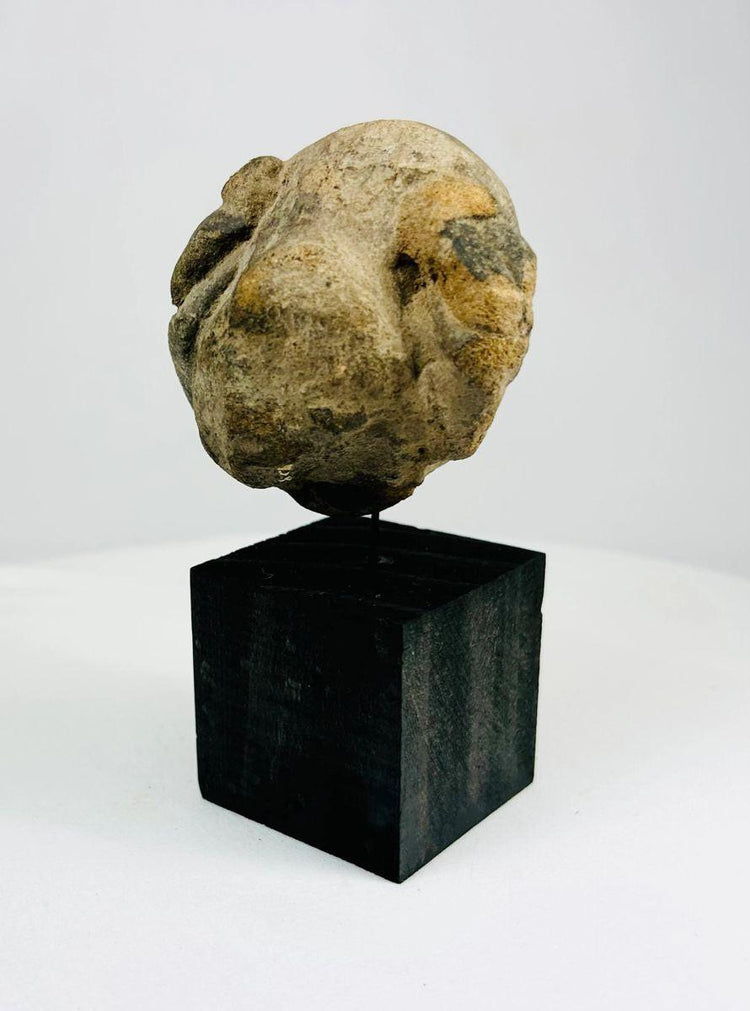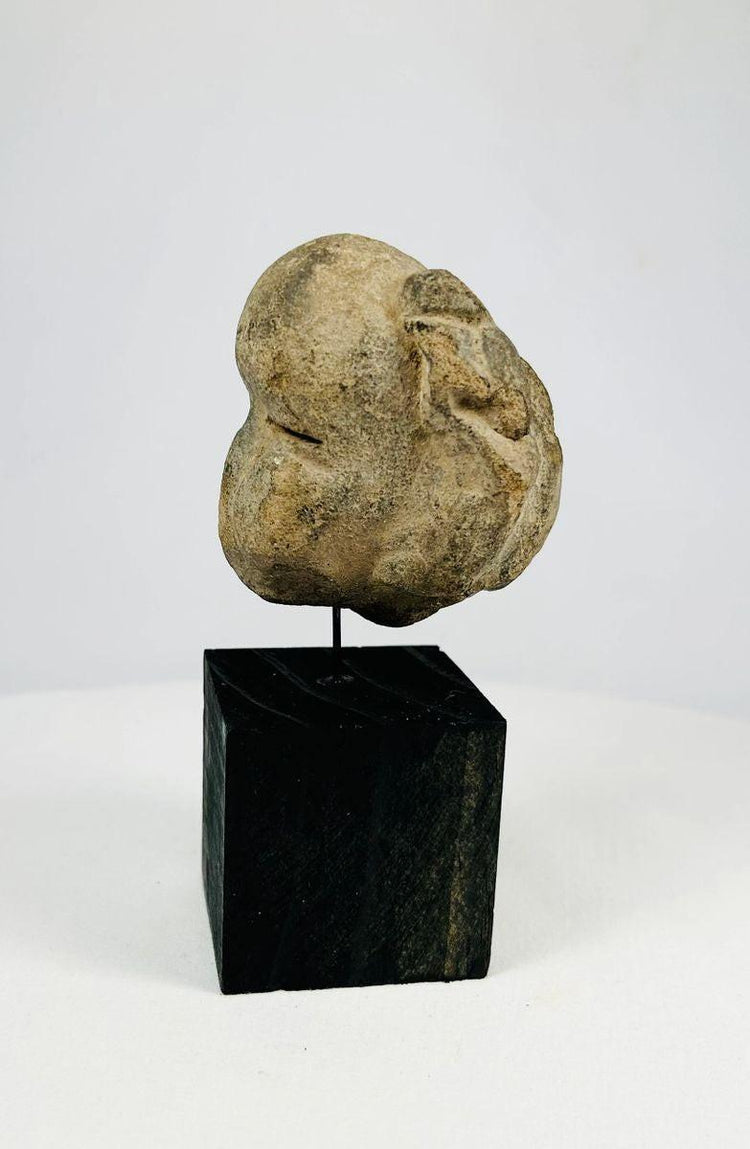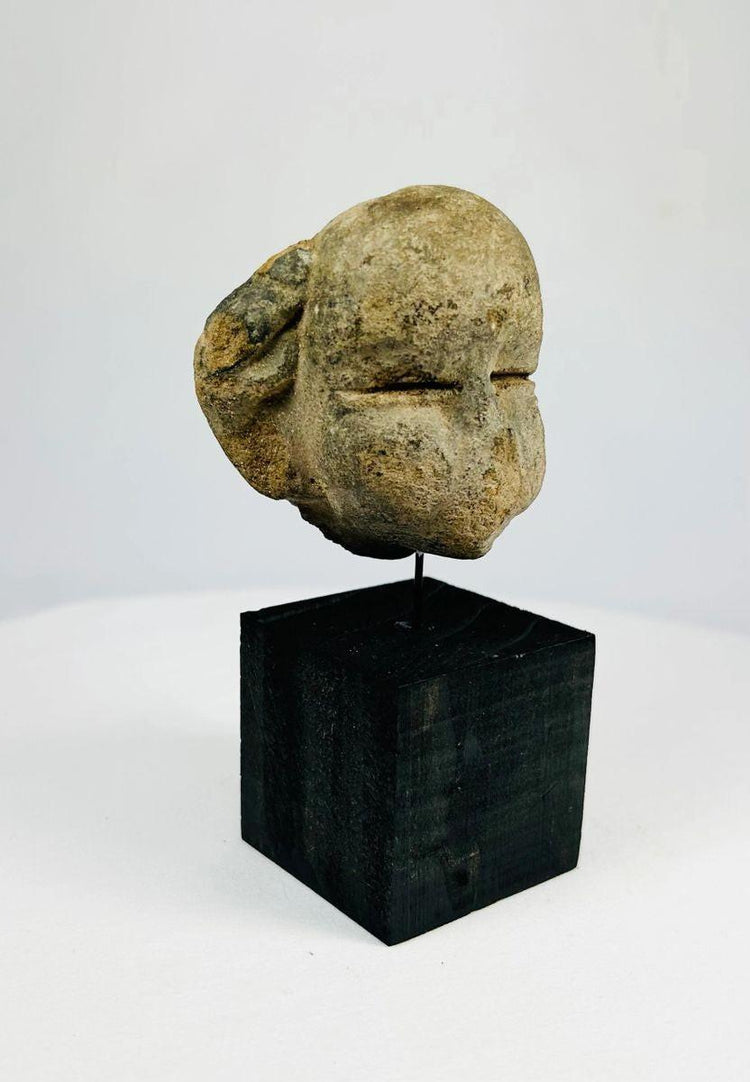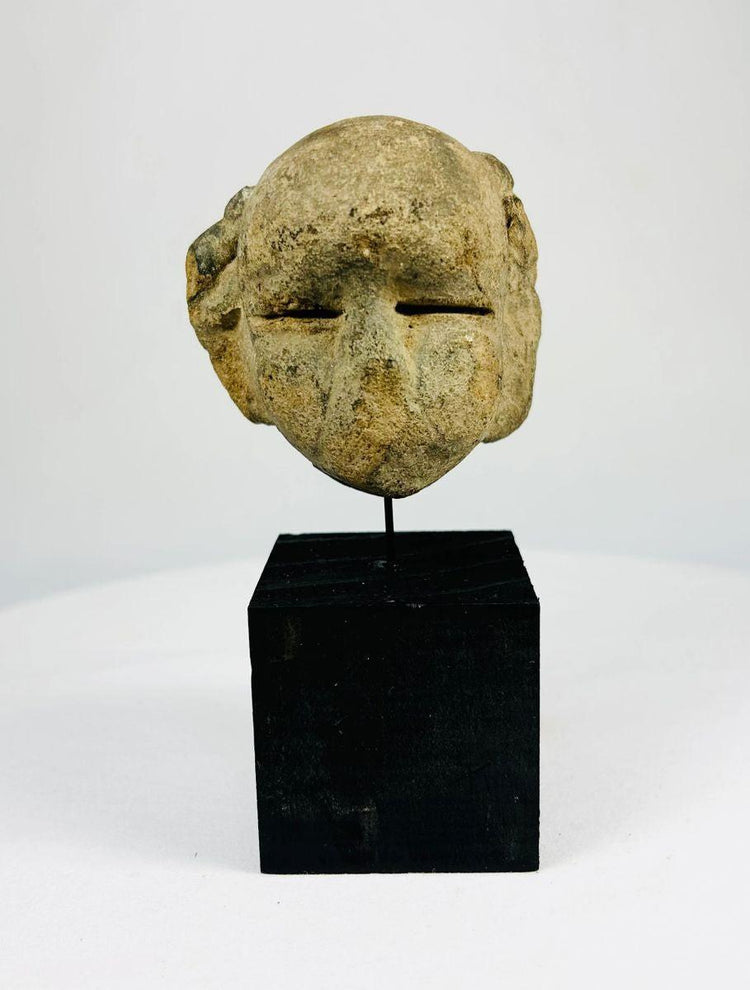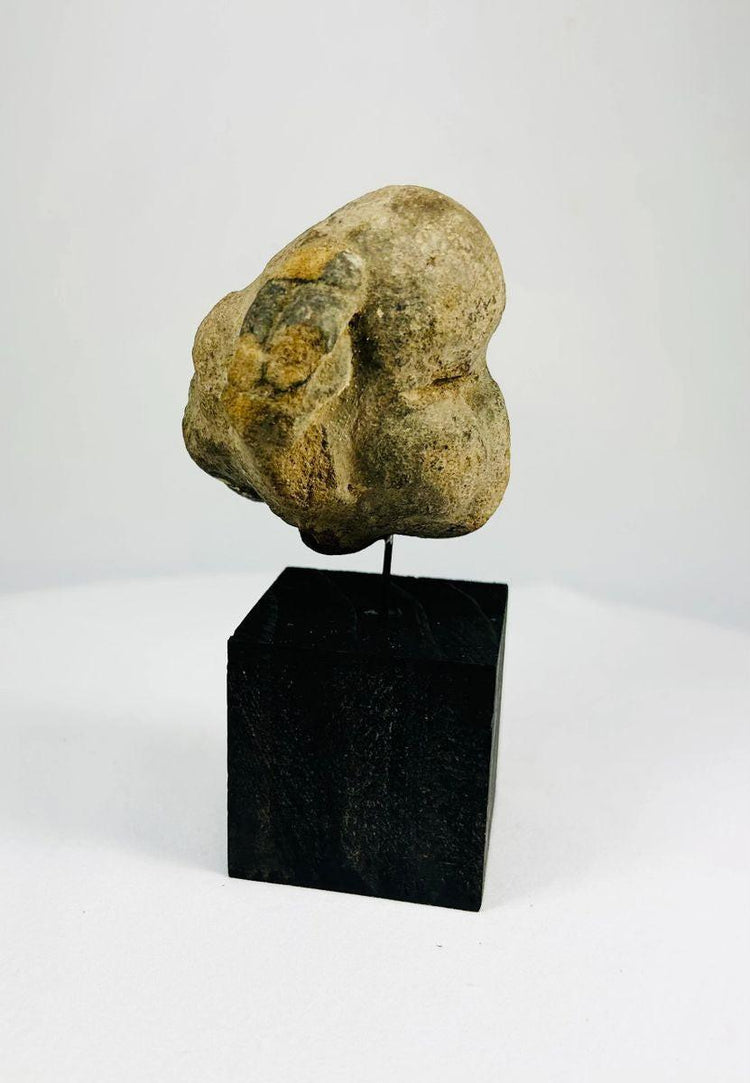Pre-Columbian | Mesoamerican | Stone Mask Fragment | Circa 500-900 AD
Description
More
Less
Historical Context & Origin
Region: Mesoamerica (likely modern-day Mexico or Guatemala)
Material: Carved stone
Period: 500 BCE – 500 CE
Description
This ancient stone mask fragment is a rare and evocative example of early Mesoamerican craftsmanship. Carved from a single piece of stone, it reflects the ritual and symbolic traditions of civilizations such as the Olmec, Maya, or Teotihuacan. With its minimalist form and narrow eye slits, the mask embodies symbolic representation over realism, aligning with the spiritual and ceremonial practices of the time.
Features
- Minimalist facial design with narrow, linear eye slits
- Rounded, weathered surface with a natural patina developed over centuries
- Hand-carved from a single stone block, showcasing advanced early stone-working techniques
- Mounted on a custom black wooden display stand for presentation
Cultural Significance
Masks held deep ritualistic meaning in Mesoamerican societies, often used in ceremonies to honor deities, represent ancestral spirits, or invoke divine protection. The stylized design of this piece emphasizes symbolism and spiritual intent rather than naturalism, reflecting the ceremonial importance placed on transformation, ancestry, and sacred representation.
Condition
The fragment shows natural wear, with surface patina, chipping, and age-related weathering consistent with centuries of use and exposure. Despite this, the design elements remain distinct, and its mounted display enhances both preservation and visual impact.
Dimensions (approximate)
Height: 5 in
Age
Circa 500 BCE – 500 CE
Learn More
Explore the fascinating world of ancient Mesoamerican civilizations
Discover additional relics from Mesoamerica’s legendary civilizations
Description
Historical Context & Origin
Region: Mesoamerica (likely modern-day Mexico or Guatemala)
Material: Carved stone
Period: 500 BCE – 500 CE
Description
This ancient stone mask fragment is a rare and evocative example of early Mesoamerican craftsmanship. Carved from a single piece of stone, it reflects the ritual and symbolic traditions of civilizations such as the Olmec, Maya, or Teotihuacan. With its minimalist form and narrow eye slits, the mask embodies symbolic representation over realism, aligning with the spiritual and ceremonial practices of the time.
Features
- Minimalist facial design with narrow, linear eye slits
- Rounded, weathered surface with a natural patina developed over centuries
- Hand-carved from a single stone block, showcasing advanced early stone-working techniques
- Mounted on a custom black wooden display stand for presentation
Cultural Significance
Masks held deep ritualistic meaning in Mesoamerican societies, often used in ceremonies to honor deities, represent ancestral spirits, or invoke divine protection. The stylized design of this piece emphasizes symbolism and spiritual intent rather than naturalism, reflecting the ceremonial importance placed on transformation, ancestry, and sacred representation.
Condition
The fragment shows natural wear, with surface patina, chipping, and age-related weathering consistent with centuries of use and exposure. Despite this, the design elements remain distinct, and its mounted display enhances both preservation and visual impact.
Dimensions (approximate)
Height: 5 in
Age
Circa 500 BCE – 500 CE
Learn More
Explore the fascinating world of ancient Mesoamerican civilizations
Discover additional relics from Mesoamerica’s legendary civilizations
You May Also Like






















